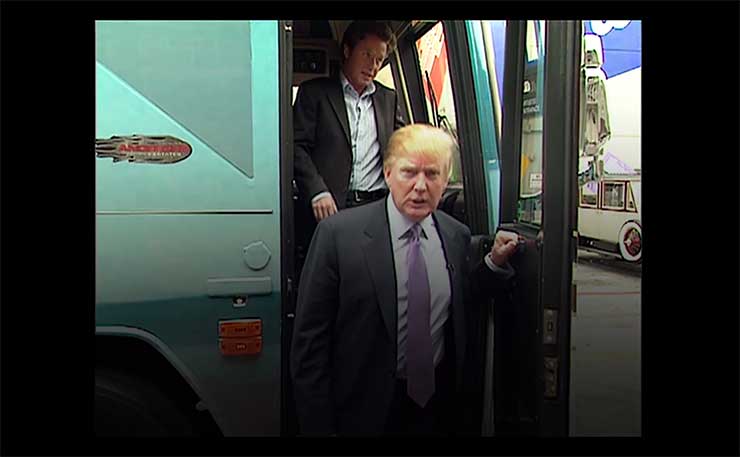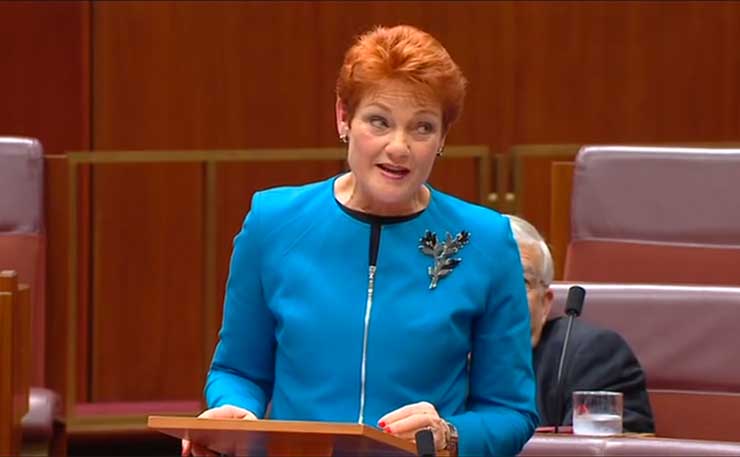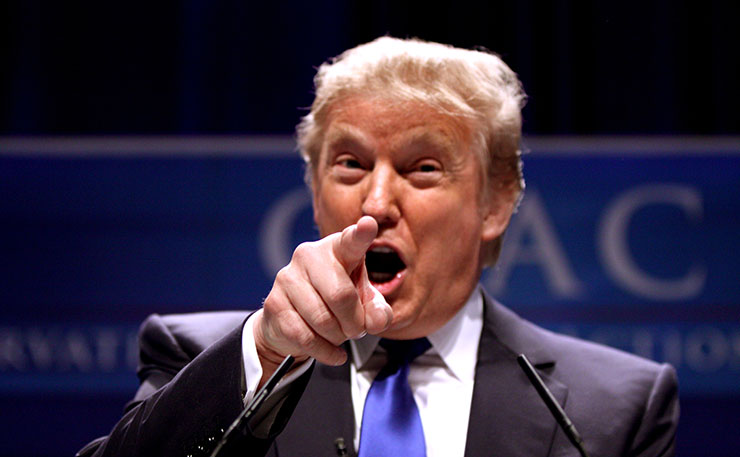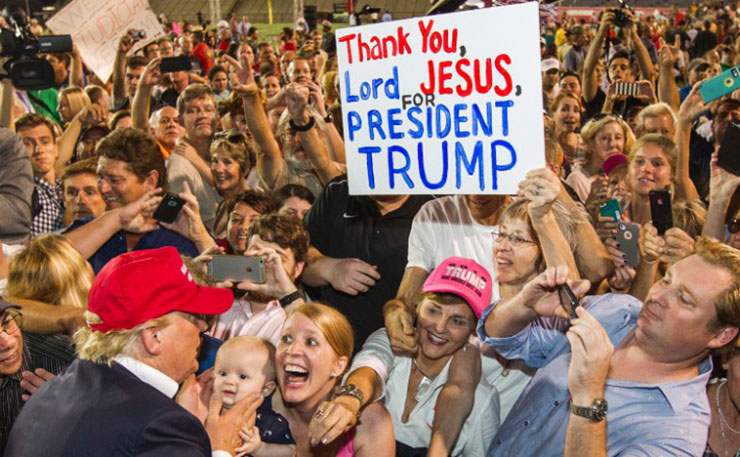Tina Grandinetti already understands the sting of white racism. But with the rise of Donald Trump – and One Nation – she’s bracing for even more push back.
I wish I had prepared myself emotionally, for a Trump win. But I didn’t. I am a woman of colour and though I have felt racism and bigotry in my life, I believed that racists and bigots were a shrinking minority. So, I was shattered when the election results came in.
My heart raced, and my head pounded, is still pounding. My mother, an immigrant, became physically ill, retching in fear and disgust. My queer sister hasn’t stopped crying. I am an ocean away, here in Australia, but I can tell you that the distance doesn’t make it hurt any less. Because the result of this election is not just an American problem. It is a race problem. It is a white problem. And the roots of that problem are alive and well in Australia.
First, let us be absolutely clear on this fact: White people elected Donald J. Trump.
According to exit polls, white people made up 69 per cent of voters, and 58 per cent of them voted for Trump. While Trump supporters have been characterised as poor and uneducated, 49 per cent of college-educated white voters voted for him. Perhaps more surprisingly, Trump won over 53 per cent of white women voters. Think about that for a second. As a voting bloc, white women chose Trump, a man who has not only insulted and attacked women, but has also boasted about sexual assault.

In an election that revolved so much around questions about gender, it was whiteness and a rush to defend its power, which propelled Trump into the presidency.
During CNN’s live election coverage, commentator Van Jones called this election a “white lash” against a changing country and a black presidency. After eight years of watching a black man in the Oval Office, he said, white Americans were angry. Trump held a bullhorn up to that anger, and pointed it at the “Other”. Any “Other” he could get his hands on.
He pointed it at Muslims, Asians, disabled people, Blacks, Mexicans, literally anyone who did not fit cleanly into the mould of a white America — white America under the guise of a “great” America. He fed not only on anger, but also, white fragility.
What is white fragility? Dr Robin DiAngelo, a white critical racial justice educator, coined the term. She describes it like this:
White people in North America live in a social environment that protects and insulates them from race-based stress. This insulated environment of racial protection builds white expectations for racial comfort while at the same time lowering the ability to tolerate racial stress, leading to what I refer to as White Fragility. White Fragility is a state in which even a minimum amount of racial stress becomes intolerable, triggering a range of defensive moves… These behaviours, in turn, function to reinstate white racial equilibrium.
This week, white American voters used their power to reinstate the racial equilibrium in the United States. In response to a black presidency and movements like #Blacklivesmatter and #NoDAPL, they voted with a resounding NO to equality in a desperate bid to preserve their claim to superiority, to being the “real” America. They voted yes to a wall, yes to Islamophobia, yes to a man endorsed by the KKK, yes to misogyny and sexual assault, all because they wanted to say no to any threats to their white privilege.
Importantly, while Australians are quick to shake their heads at the spectacle of American electoral politics, white Australia appears to be in a similar scramble to preserve the racial equilibrium of white supremacy.
In 2016, Pauline Hanson was re-elected and the One Nation Party is on the rise. A racist caricature of Indigenous men that looked like it was straight out of the 1930’s was vehemently defended and even lauded as “starting an important conversation”.

A South Asian man named Manmeet Alisher was burned alive in a suspected hate crime. Two refugees in detention set their bodies on fire to protest their treatment at the hands of the Australian government.
So let’s be real. As Naomi Klein said on QandA last week, one of the worst things about Trump is that his outrageous statements can make nearly anything look a little saner in comparison. “We can all feel terrifically smug because we’re not that crazy,” she said. “I think that Donald Trump talking about building the wall with Mexico is insane and racist, but I also think what Australia is doing on Nauru and Manus is as well.”
Insanity and racism are not uniquely American ailments.
To understand this boiling over of hatred, we must, of course, interrogate a complex web of factors – income inequality, neoliberal capitalism, settler colonialism, patriarchy.
In the aftermath of the election, there have been a seemingly endless supply of think pieces asking us to understand the plight of the disillusioned white working class. And this is, undoubtedly, something worth understanding. But there is also the plain and simple fact that deep down, there are many, many Americans, and many, many Australians, who believe that their country belongs to white people.
If Trump’s racism was not a deciding factor in their decision, it was, at least, tolerable. In the aftermath of the US election and the run-up to four years of a Trump presidency, this is a crucial point.
If people of colour had any illusions about how white Americans feel about our existence and our right to belong in our country, those have been decisively crushed. We know the truth now, in the pit of our stomachs.
But as Van Jones argued, the vote was a white lash. Like whiplash, white lash is the result of powerful forward momentum, of nearly unstoppable inertia. It is happening in stops and starts, with a few steps forward and many back, but it is happening. You can see it in the millennial vote. I can see it in my own family. My older, white aunts and uncles voted for Trump, but the next generation of my family are black, queer, biracial, transgender, and progressive. And that inertia is at work in Australia too.
I moved to Australia last year, from Hawaii, the only state in the union that has always had a non-white majority. Racial politics in Hawaii are far from perfect, particularly in light of America’s settler colonial presence. But in Hawaii, I can feel safe, even empowered, as a person of colour.

When I moved to Melbourne, I had some of my first experiences with explicit racism. On the tram, a pack of teenaged boys with One Direction hair called me “yellow” and told me to go home, because Australia is full.
My skin prickled in anger, and I felt something tug hard at my insides, like a fist tight clenched around my stomach. I was on my way to a bar, and when I arrived, shaken, I joined my friends at a table and looked around.
My white partner sat beside me. A Lebanese-Australian beside him. A German. A biracial Chinese Malaysian-Australian. Those boys were clinging to an image of Australia that has never existed and certainly doesn’t now. They were losing.
But, in the year and a half that I’ve been here, I’ve watched American and Australian politicians coddle those boys on the tram, validating their attacks, analysing them as a cry for help from the disenfranchised.
I tried to understand them too. But I am done trying. I want to call it what it is. Racism and white fragility. People of colour know what it is like to feel disenfranchised, invisible, forgotten. But in the face of all of those things, we have always struggled for justice and equality. We are responsible for so much of what is, was, or ever will be great about these countries. Trump and Hanson are not our problem.
White Australians. Trump was not a joke, and neither is Pauline Hanson, Malcolm Roberts, or the One Nation Party, which has its eyes set on 13 seats in the Queensland Parliament.
Don’t wait until an election to wake up to the fact that racism is real, structural, and persistent.
Australians of colour. Brace yourselves for impact, because the inertia of your labour, your resistance, your survival, will collide with white fragility, just as it did in the US.
Whether it happens in the halls of government or your commute to work, the white lash is real, and it hurts. But as you watch my country wrestle with the violence and hatred of this election, know that we are in this together.
Donate To New Matilda
New Matilda is a small, independent media outlet. We survive through reader contributions, and never losing a lawsuit. If you got something from this article, giving something back helps us to continue speaking truth to power. Every little bit counts.





